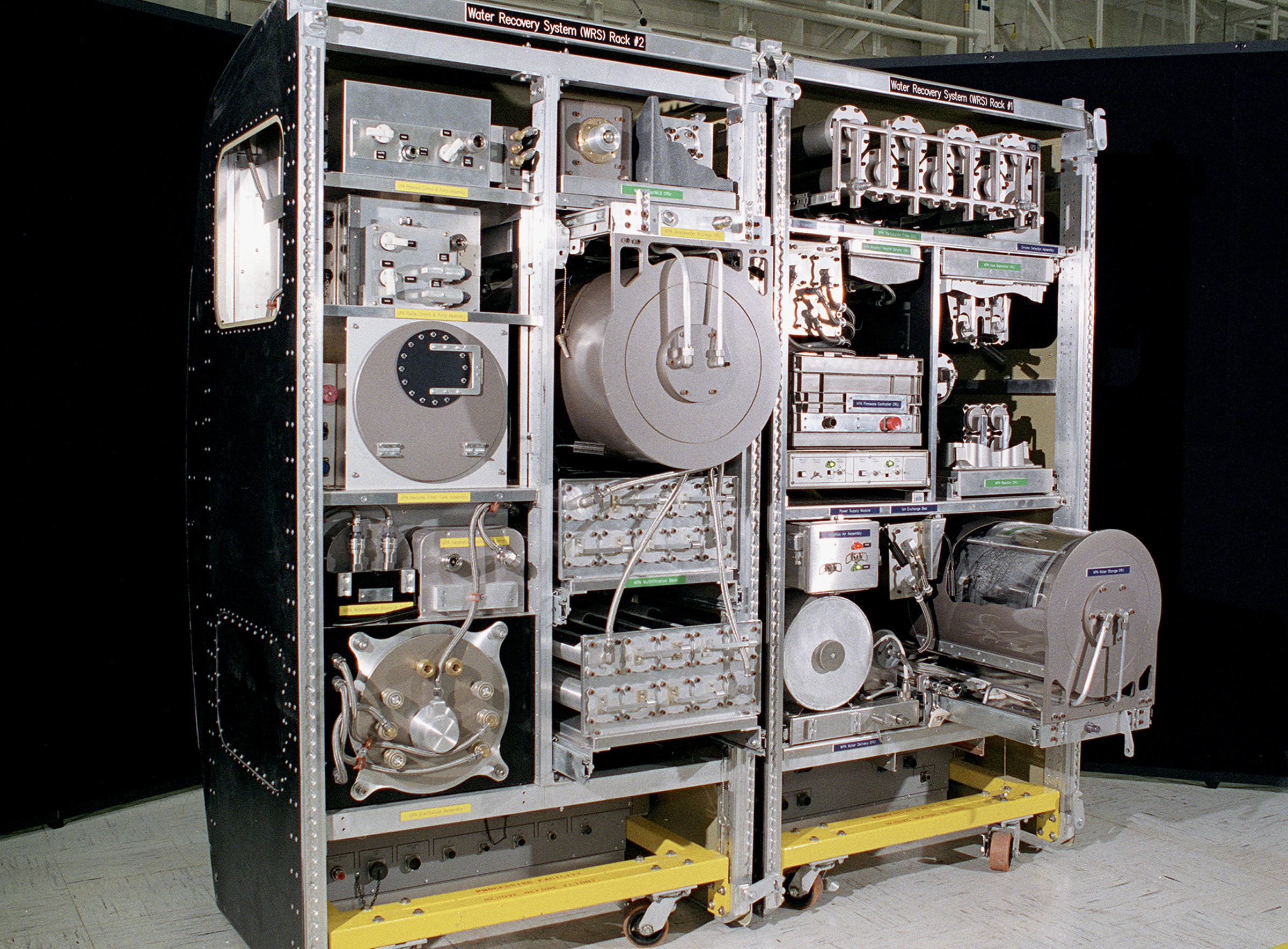
‘On Earth, distilling is a simple process of boiling water and cooling the steam back into pure water.' In space however, the extreme conditions make it more challenging to provide astronauts with safe drinking water. On the International Space Station (ISS), ‘[a] keg-sized distiller spins to produce an artificial gravity field while boiling the water. The contaminants in the urine or greywater press against the sides of the drum while the steam gathers in the middle and is pumped to a filter.’
‘Product water from the Urine Processor is combined with all other wastewaters and delivered to the Water Processor for treatment. The Water Processor removes free gas and solid materials such as hair and lint [and minerals such as calcium sulfate, due to loss of bone mass in zero-gravity], before the water goes through a series of multifiltration beds for further purification. Any remaining organic contaminants and microorganisms are removed by a high-temperature catalytic reactor assembly. The purity of product water is checked by electrical conductivity sensors (the conductivity of water is increased by the presence of typical contaminants). Unacceptable water is reprocessed, and clean water is sent to a storage tank, ready for use by the crew.’ At the end of the process, around 70% of all water content can be recovered.
← Back to Lexicon
Drinking waste water in space
Sources: NASA. Water recycling system on ISS
Sources: NASA. Water recycling system on ISS
